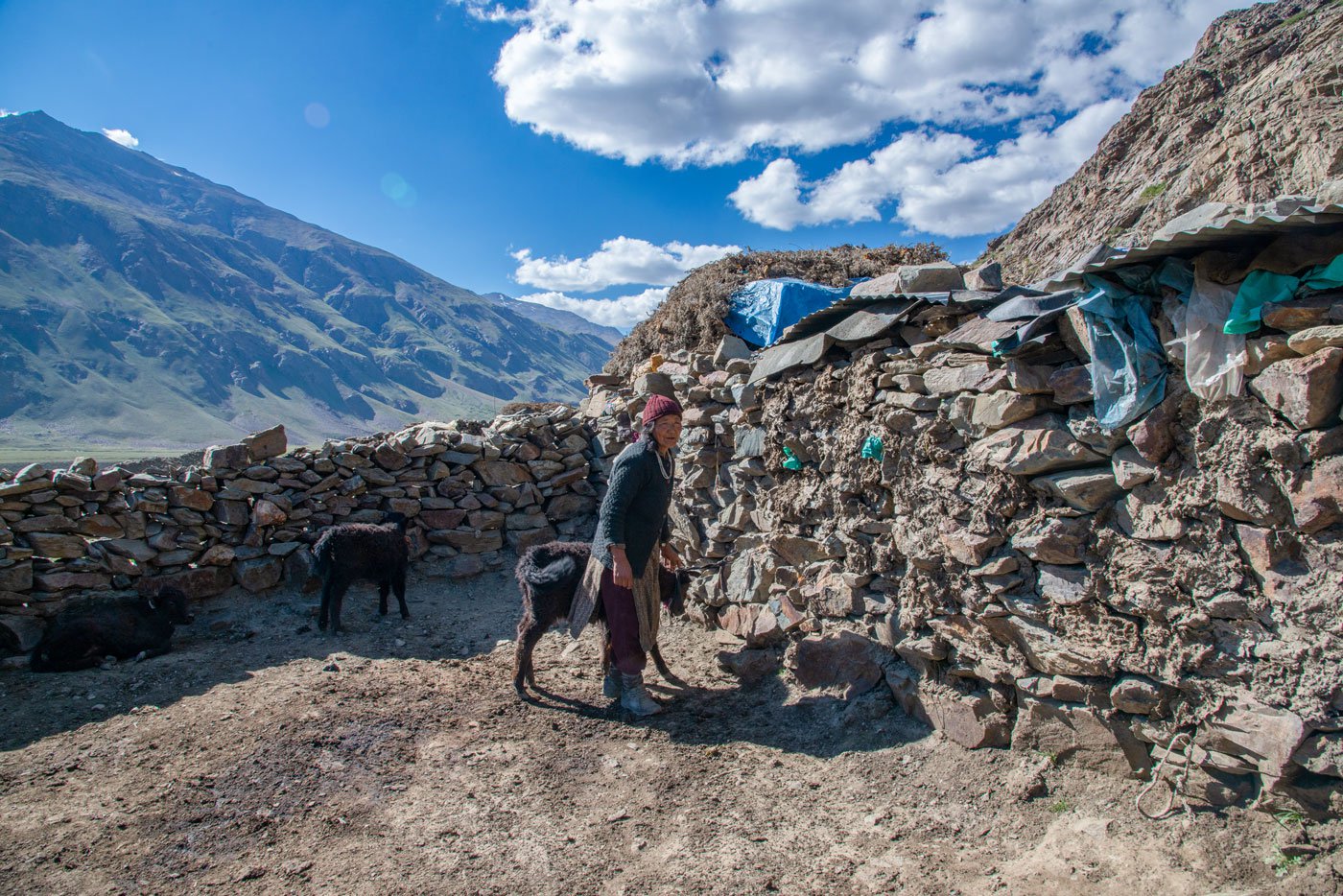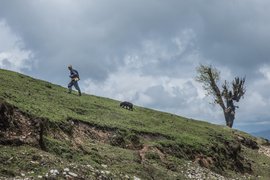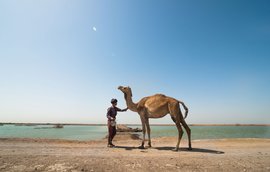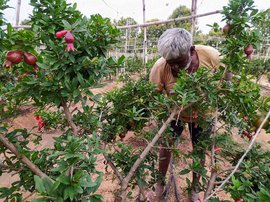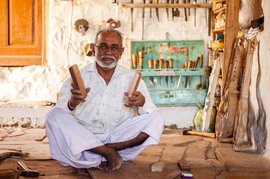“The population of yaks is decreasing,” says Padma Thumo. A yak herder for more than 30 years, she adds, “very few yaks can be seen in the lower plateau [around 3,000 metres] nowadays.”
Padma is from Abran village in Zanskar block and has been travelling with roughly 120 animals a year across the high and cold mountains of Ladakh where temperatures drop to around minus 15 degrees Celsius.
Yaks ( Bos grunniens ) adapt easily to these cold temperatures but find it difficult to survive above 13 degrees Celsius.
In the last few decades, locals say the current average summer temperatures in the lower plateaus of Zanskar valley have been rising above 25 to even 32 degrees Celsius. “There is a large variation in temperatures during the winter and summer season,” says Tenzin N., a driver from the valley.
This unusual heat has
impacted the yak population which has shrunk in Jammu and Kashmir to half (
20th
Livestock Census)
, between from 2012 to 2019.
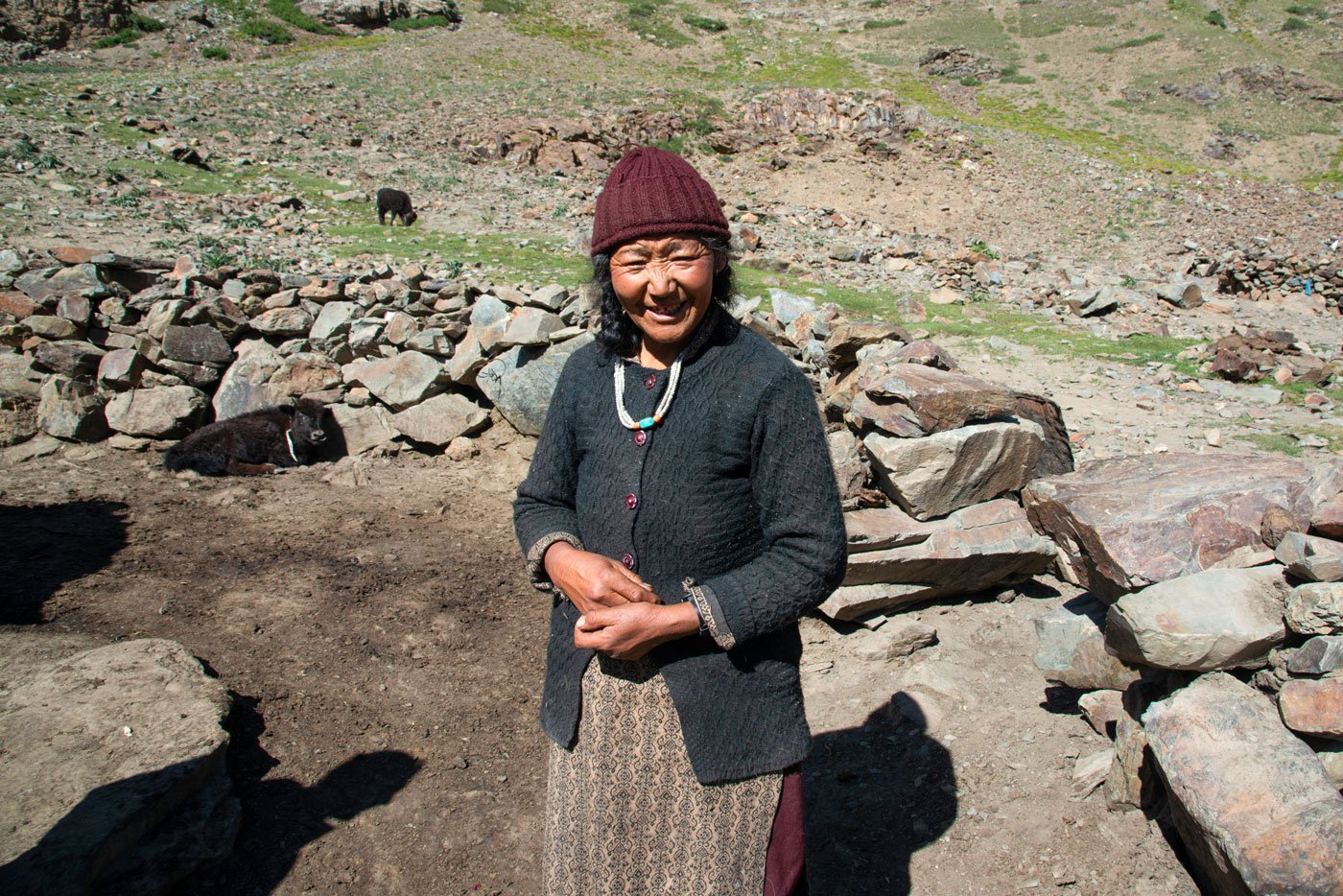
Padma Thumo has been a yak herder for more than 30 years in Abran village in Kargil district of Ladakh
Unlike Changthang plateau where there are a large number of yak pastoralists, there are relatively few of them in the Zanskar valley. Known as Zanskarpas, locals say their number has also dropped. Only a few families from Abran, Aksho and Chah villages in Kargil district of Ladakh still keep yak herds.
Norphel used to be a pastoralist, but he sold his yaks in 2017 and opened a seasonal shop in Abran village. His shop is open from May to October, and sells tea, biscuits, packaged foods, kerosene, utensils, spices, cooking oil, dry meat and more. He recalls the work as a pastoralist being tedious, and not profitable. “Earlier I also had yaks, but now I have cows. I earn mostly from my seasonal shop, sometimes 3,000-4,000 rupees in a month but that's still more than [money from] yak herding.”
Sonam Motup and Tsering Angmo, also from Abran, have been yak pastoralists for a few decades now – tending to their roughly 120 yaks. “Every year during summer [May-October], we migrate higher up the valley [where it is colder] and live in a doksa for four to five months,” Tsering says.
A doksa is a settlement with many rooms and sometimes a kitchen for families who migrate during the summer. Also known as goth and mani, they are built with accessible materials such as mud and stones. Pastoralists from a village usually share a doksa with family members taking turns to be with the herd. “I graze the animals and take care of them. Life is busy here,” says Sonam.
During these months,
Sonam and Tsering’s day starts at 3 a.m. with making
churpi
(local cheese), which they sell. “After sunrise, we take the
herd for grazing and then rest in the afternoon,” says the 69-year-old Sonam.
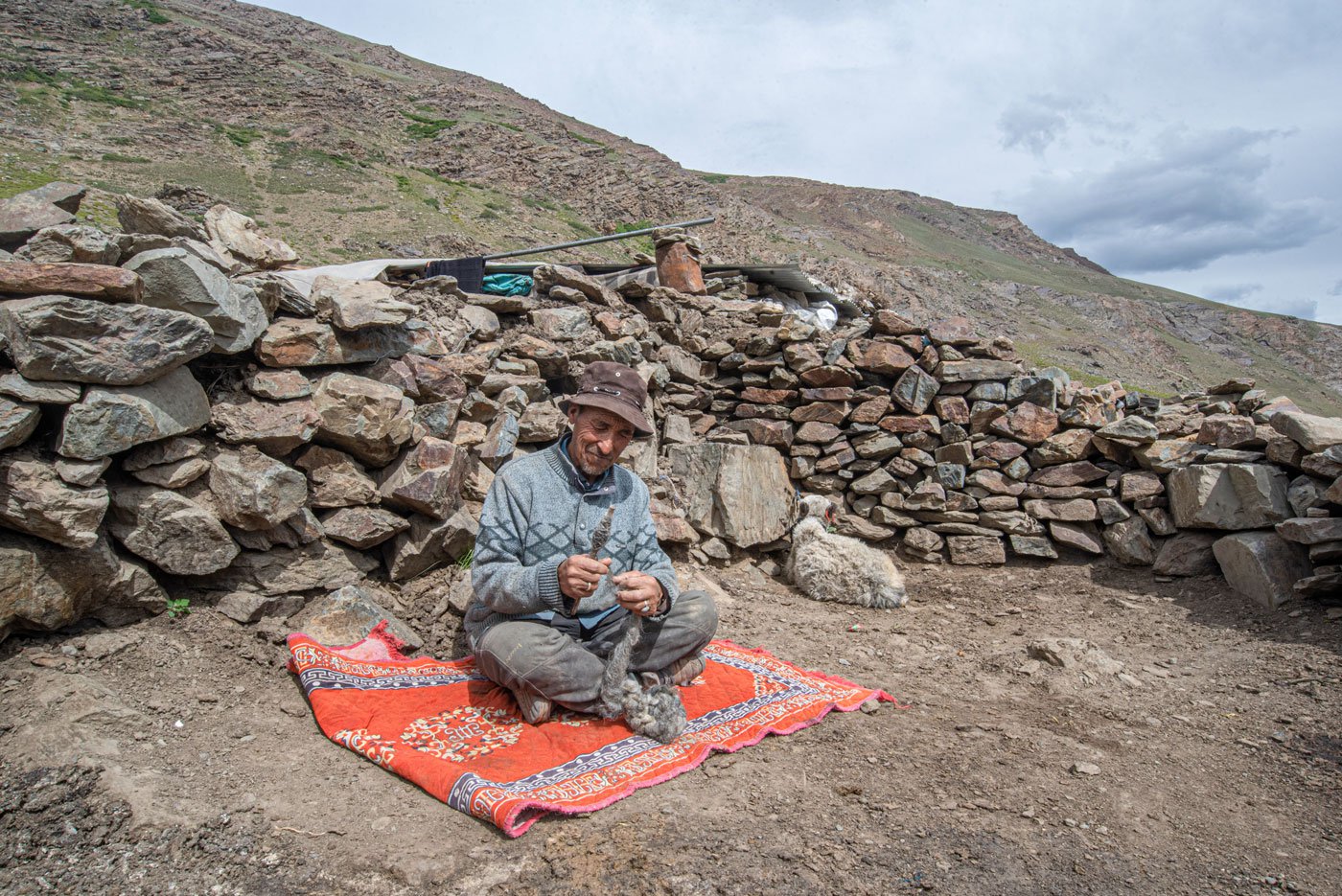
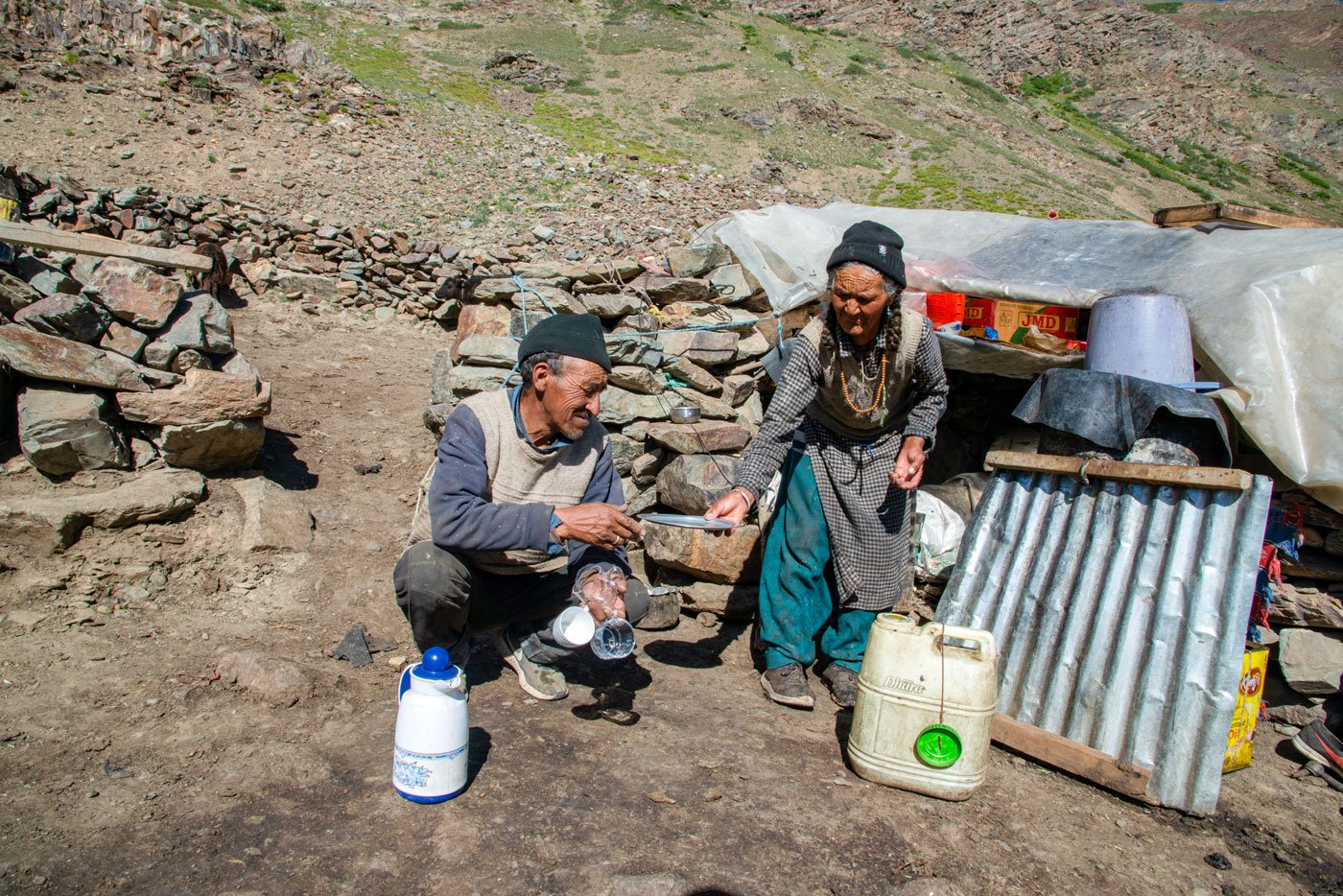
Left: Sonam Motup knitting with yak wool in his doksa (settlement) during some free time in the afternoon. Right: Sonam and Tsering have been married for more than 40 years
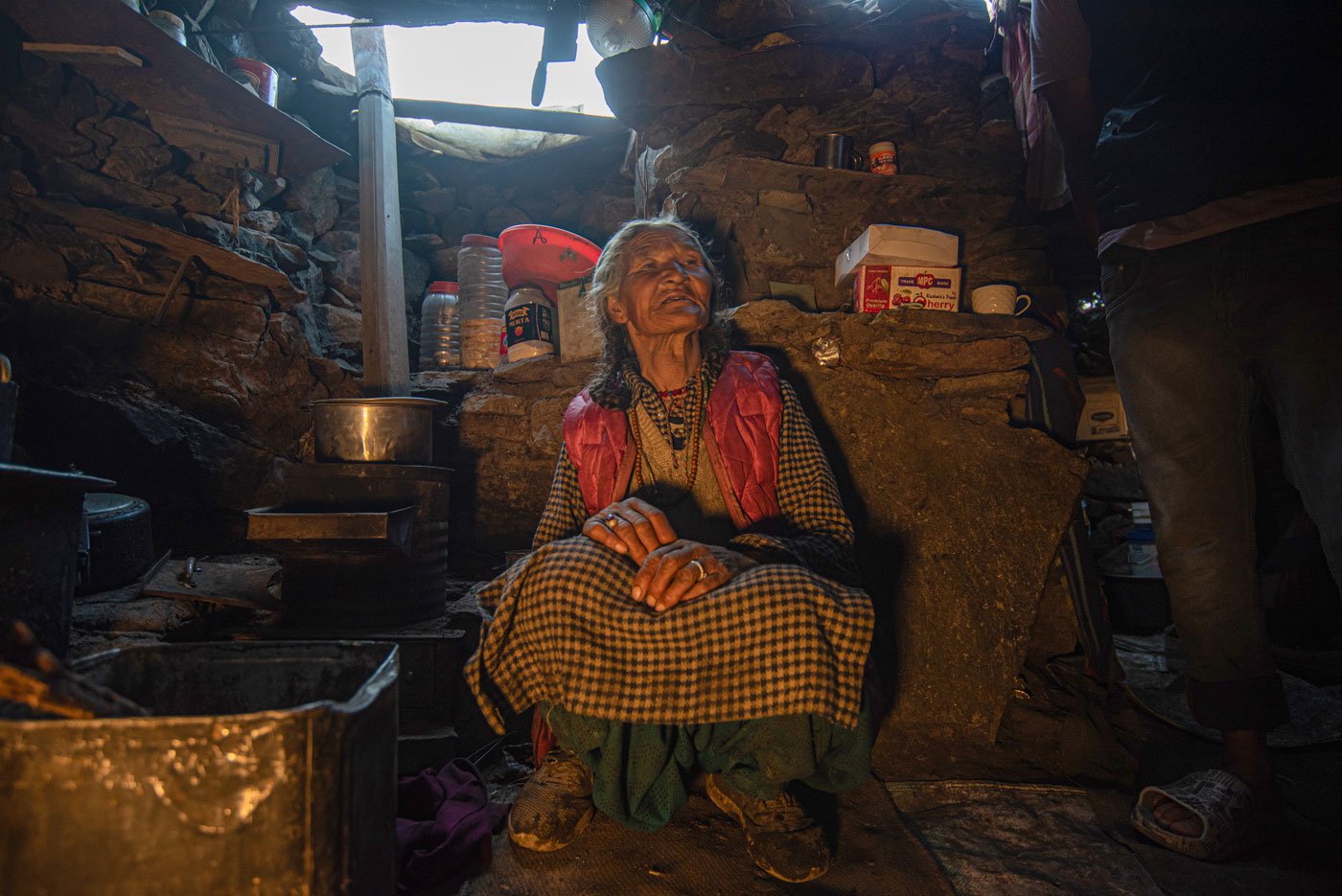
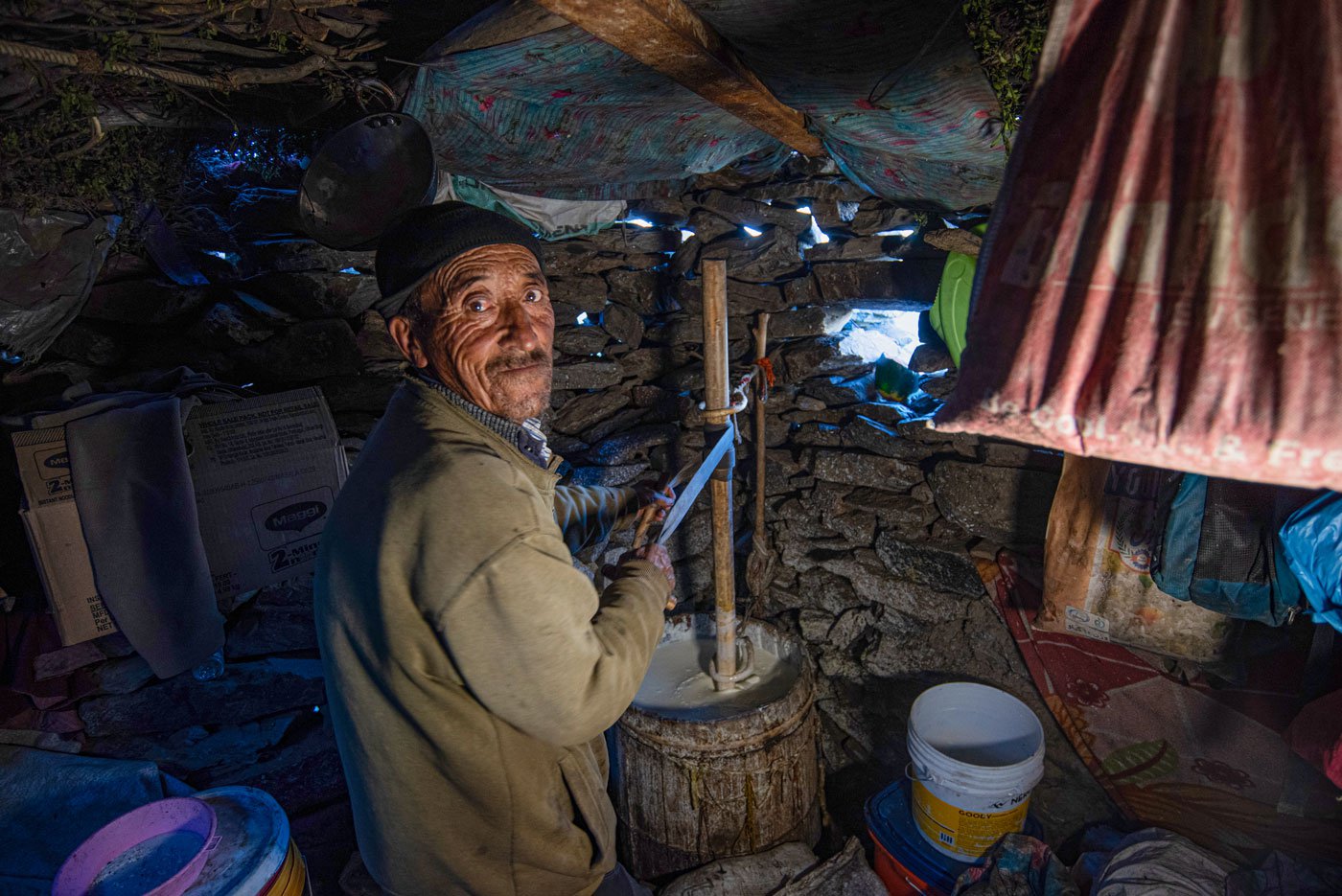
Tsering Angmo (left) in her kitchen. Her husband, Sonam (right) cooking the milk he collected the day before
“Pastoralists here [Zanskar valley] are mostly dependent on female dzomos,” says Tsering. The male dzo and female dzomos are a breed that is a cross between a yak and kots ; the dzos are sterile. “We keep male yaks here only for breeding purposes. We get milk from dzomos, and make ghee and churpi from it,” the 65-year-old adds.
The couple say that their income has fallen to a third of what it used to be in the last decade. Like them, many are finding it difficult to depend on this work. When PARI met them in August 2023 the pastoralists were worried about finding enough fodder during the winter months. Supply of fodder depends on adequate water, but agriculture in Ladakh has taken a hit from decline in snowfall and receding glaciers – the only water sources in this high-altitude desert.
Although village Abran has not been affected yet, Sonam is worried – “I keep thinking about what may happen if the climate changes and there is no longer enough water to drink or grass to feed my animal.”
Sonam and Tsering have five children – between the ages of 20 and 30 – and none of them have continued in line, preferring daily wage jobs.
“The younger generation is drawn to settling down in urban areas rather than continuing this traditional profession; most of them want to work as drivers and labourers for Border Roads Organisation,” says Sonam.
Padma Thumo agrees. “This [herding yaks] is not a sustainable business
anymore.”
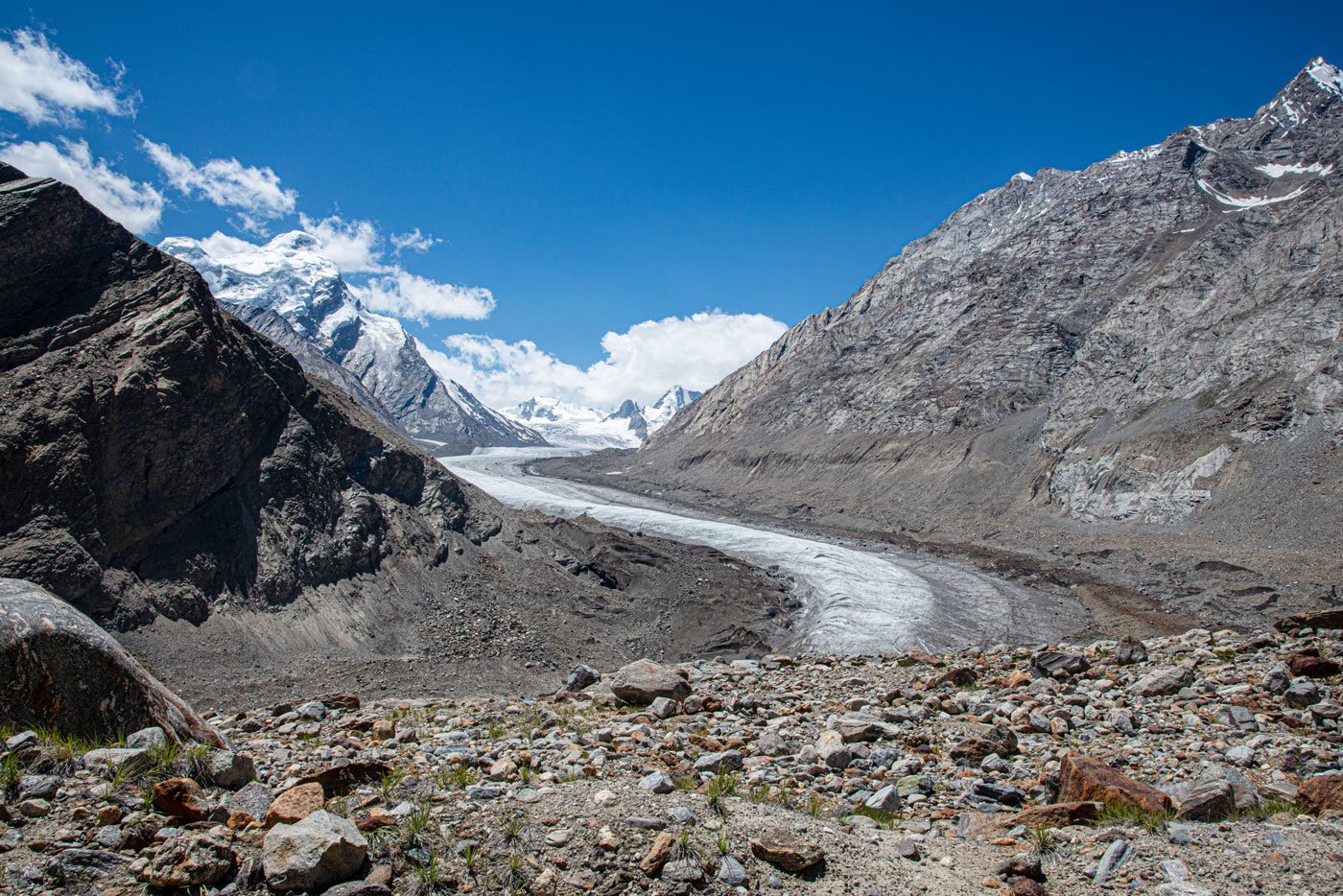
Unlike Changthang plateau where there are a large number of yak pastoralists, there are relatively few of them in the Zanskar valley
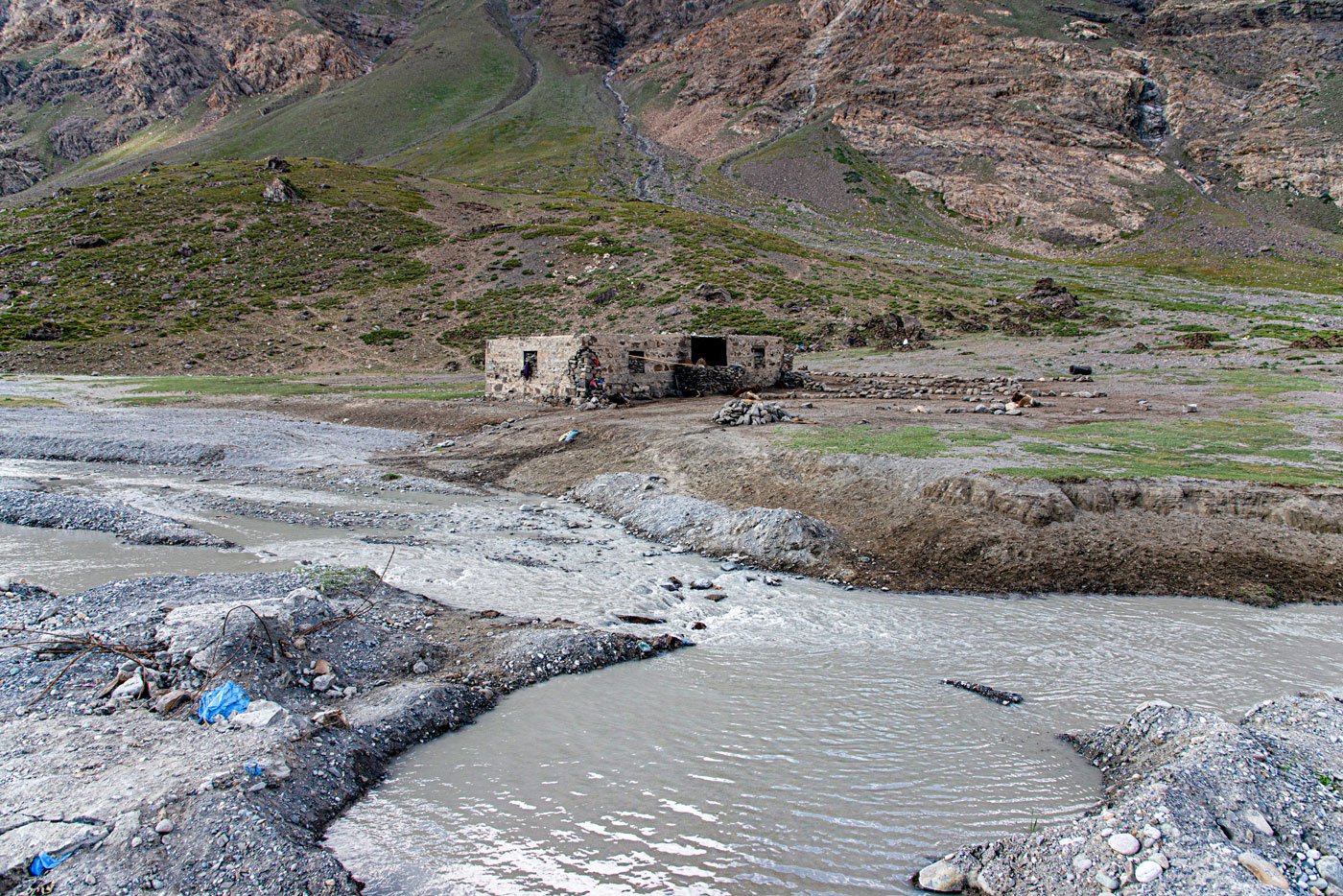
The pastoralists stay in a
doksa
when they migrate up the valley in summers. Also, known as
goth
and
mani
, they are built using mud and stones found around
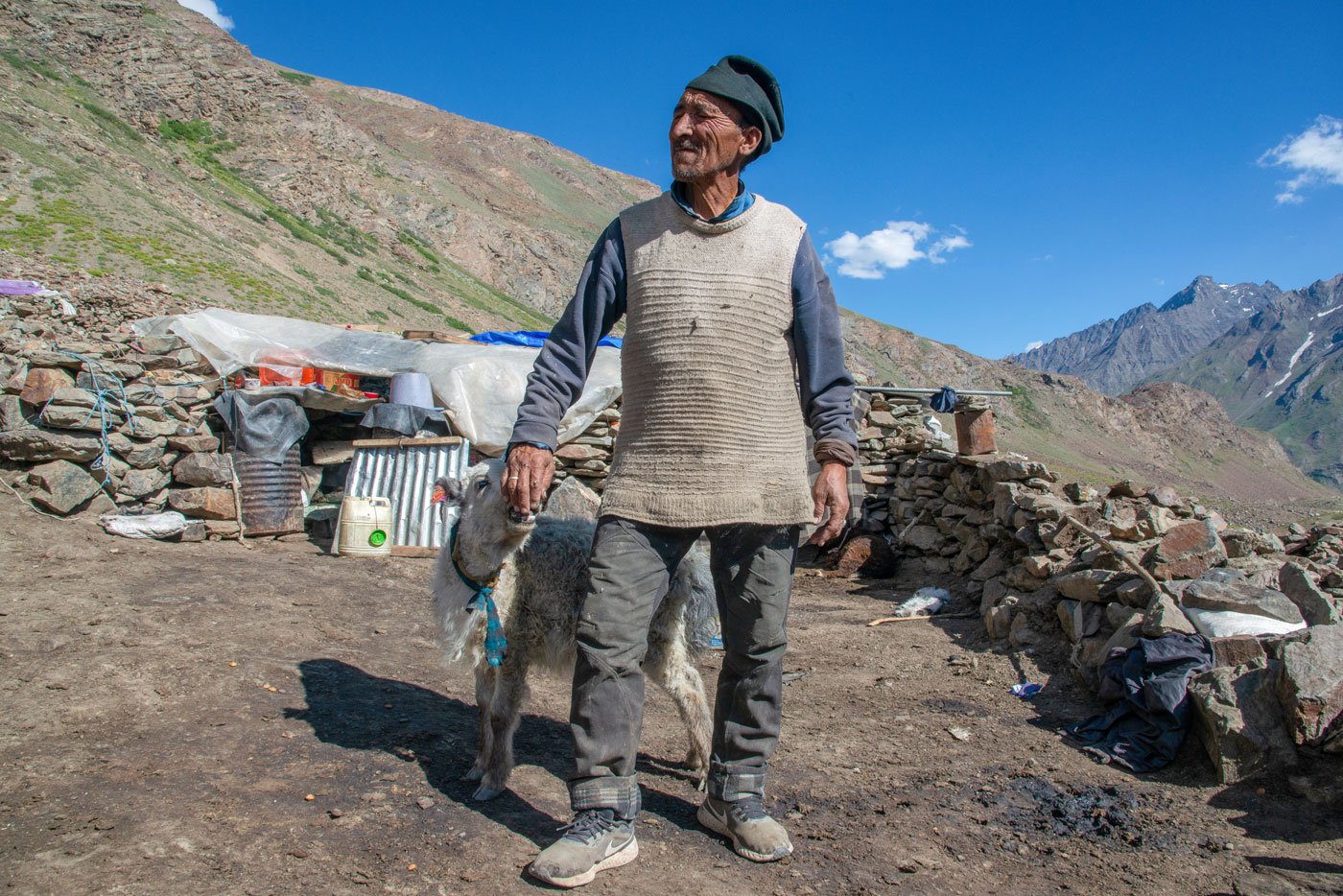
The 69-year-old Sonam Motup from Abran village has been tending to approximately 120 yaks for a few decades now
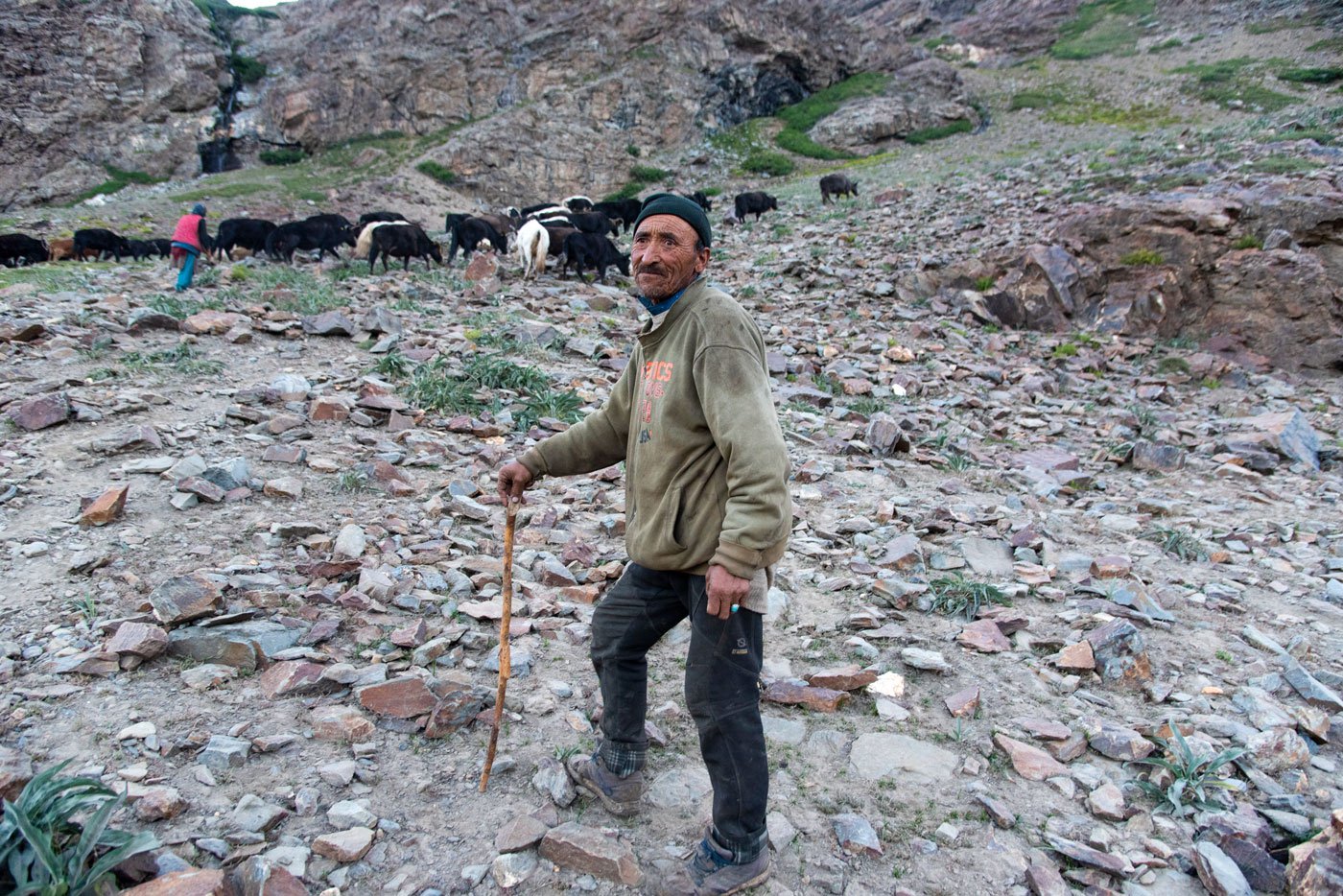
Sonam Motup taking his herd of animals through a steep climb in search of grazing ground
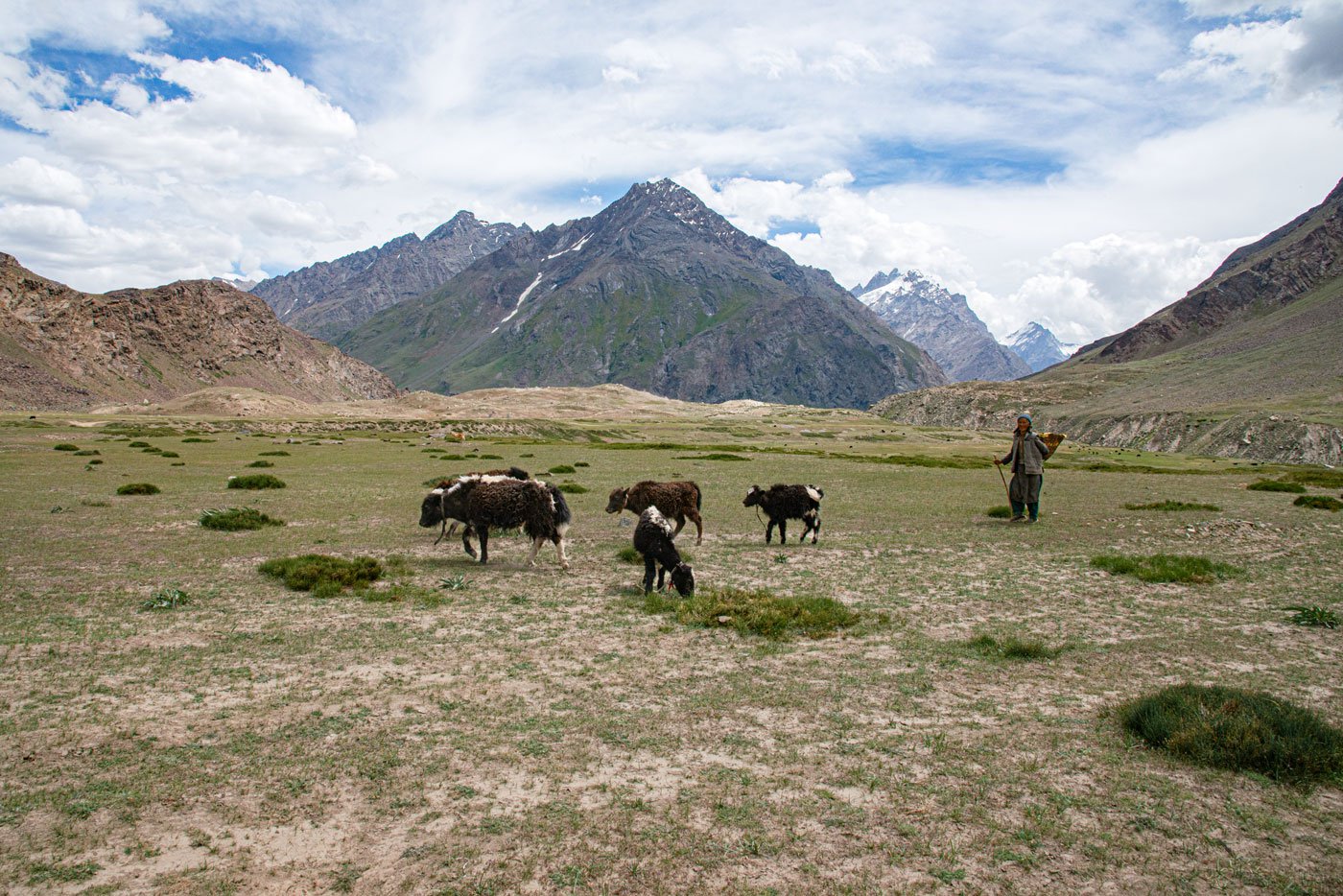
Yaks and dzomo calves grazing at a high altitude grassland
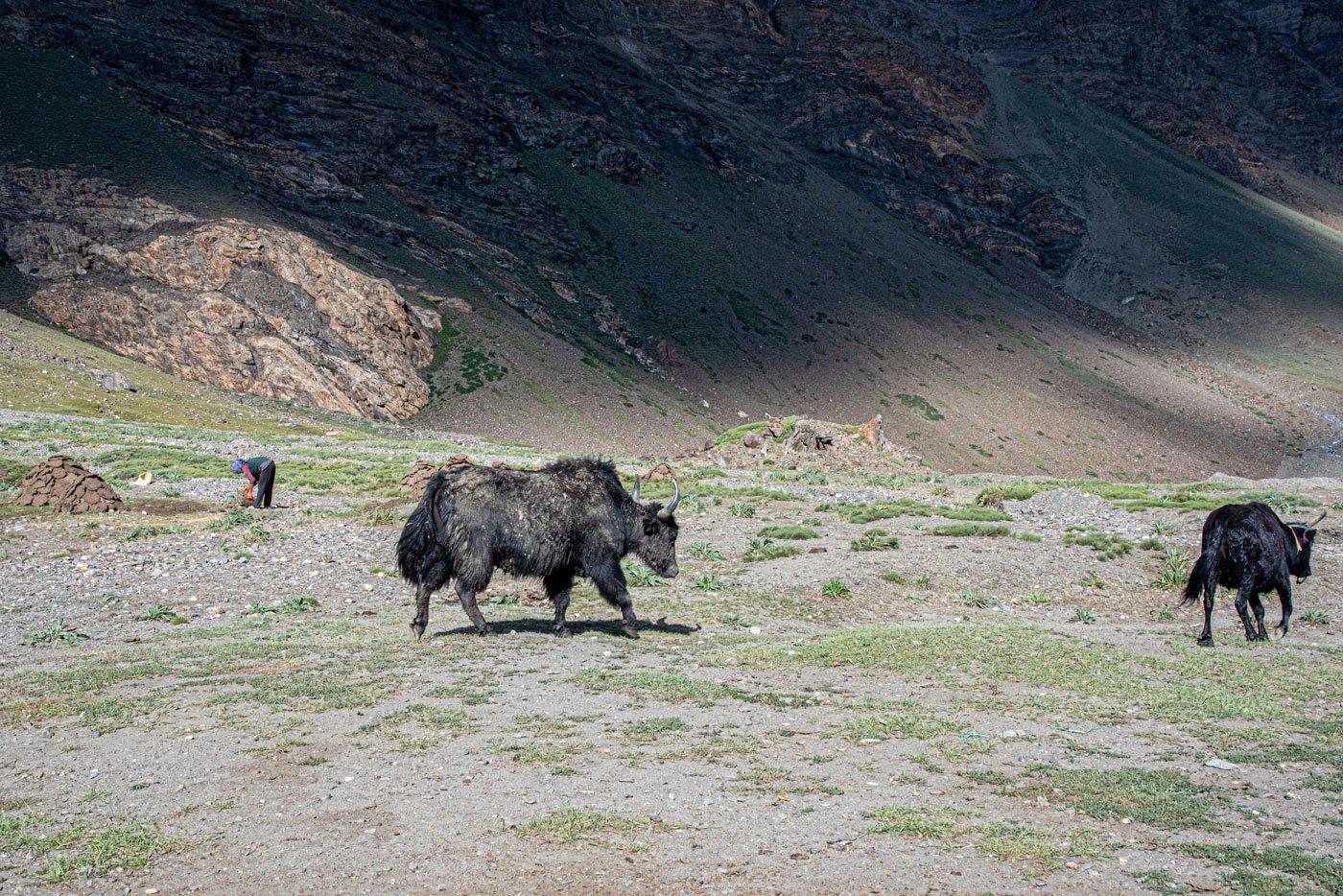
Locals say that there is a large variation in temperatures, with unusually hot summers. This has affected the yak population which has halved in the last ten years
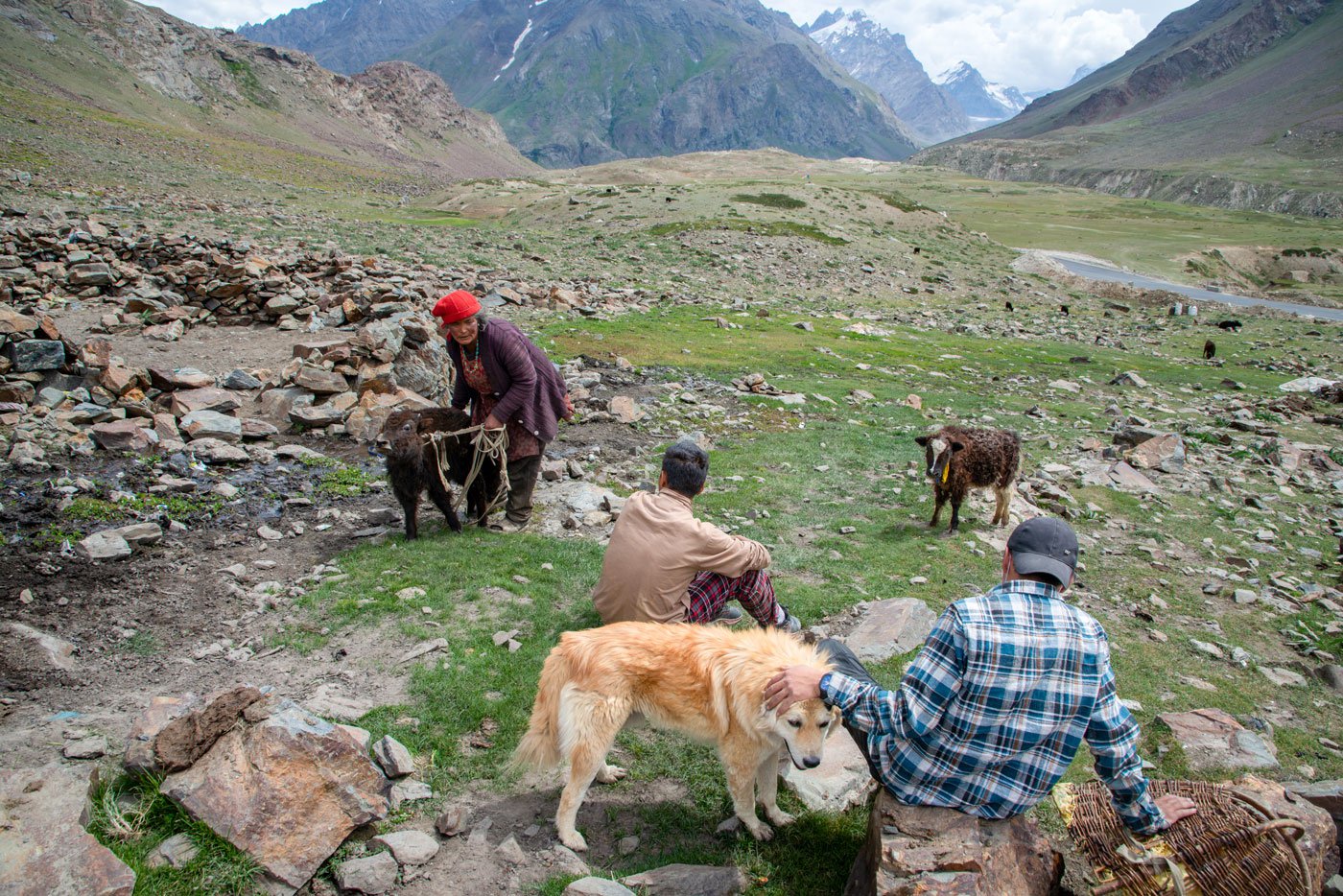
Tashi Dolma, a yak herder with her son and niece, who study in the Chumathang in Leh district
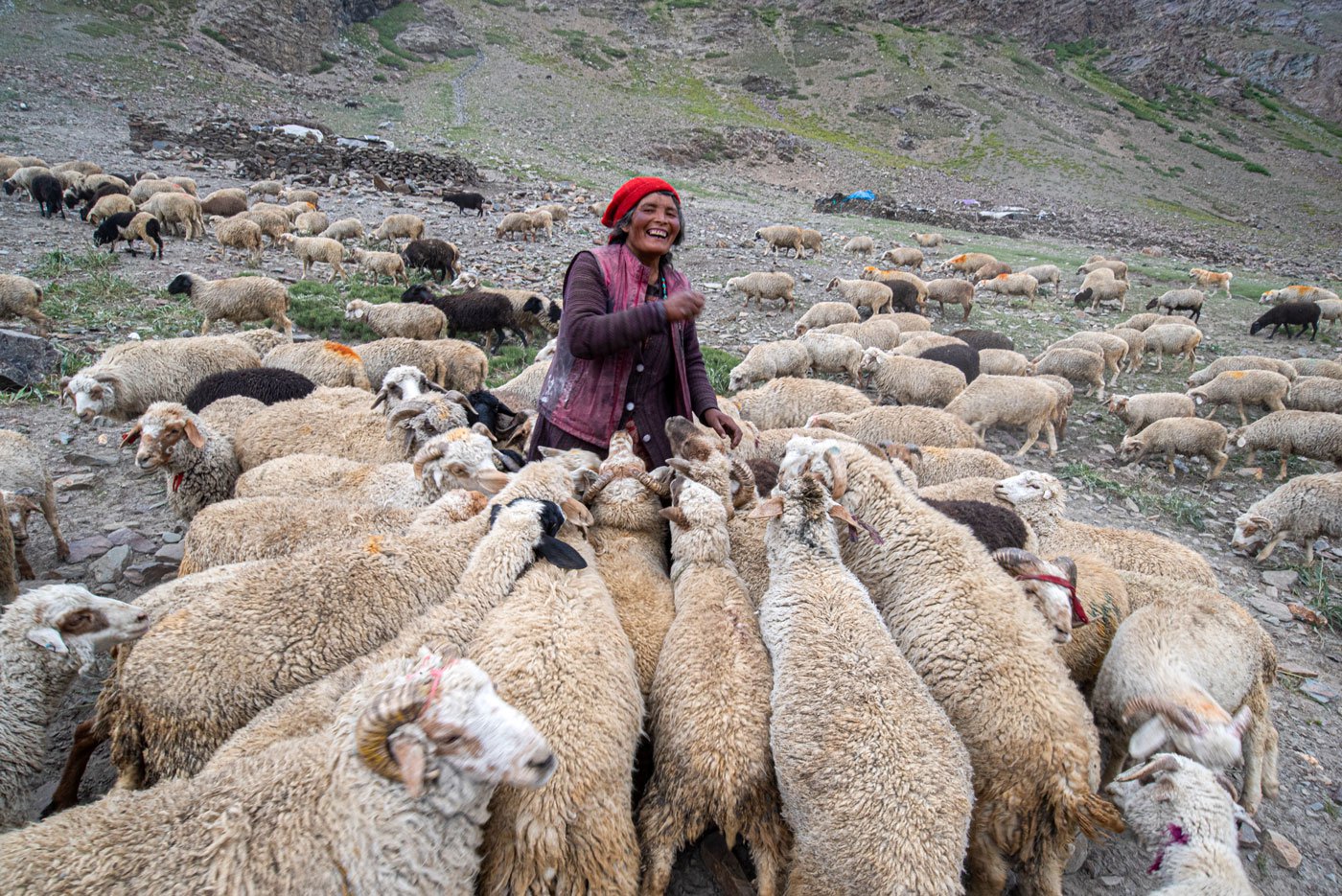
Tashi Dolma surrounded by a flock of sheep which belong to her family
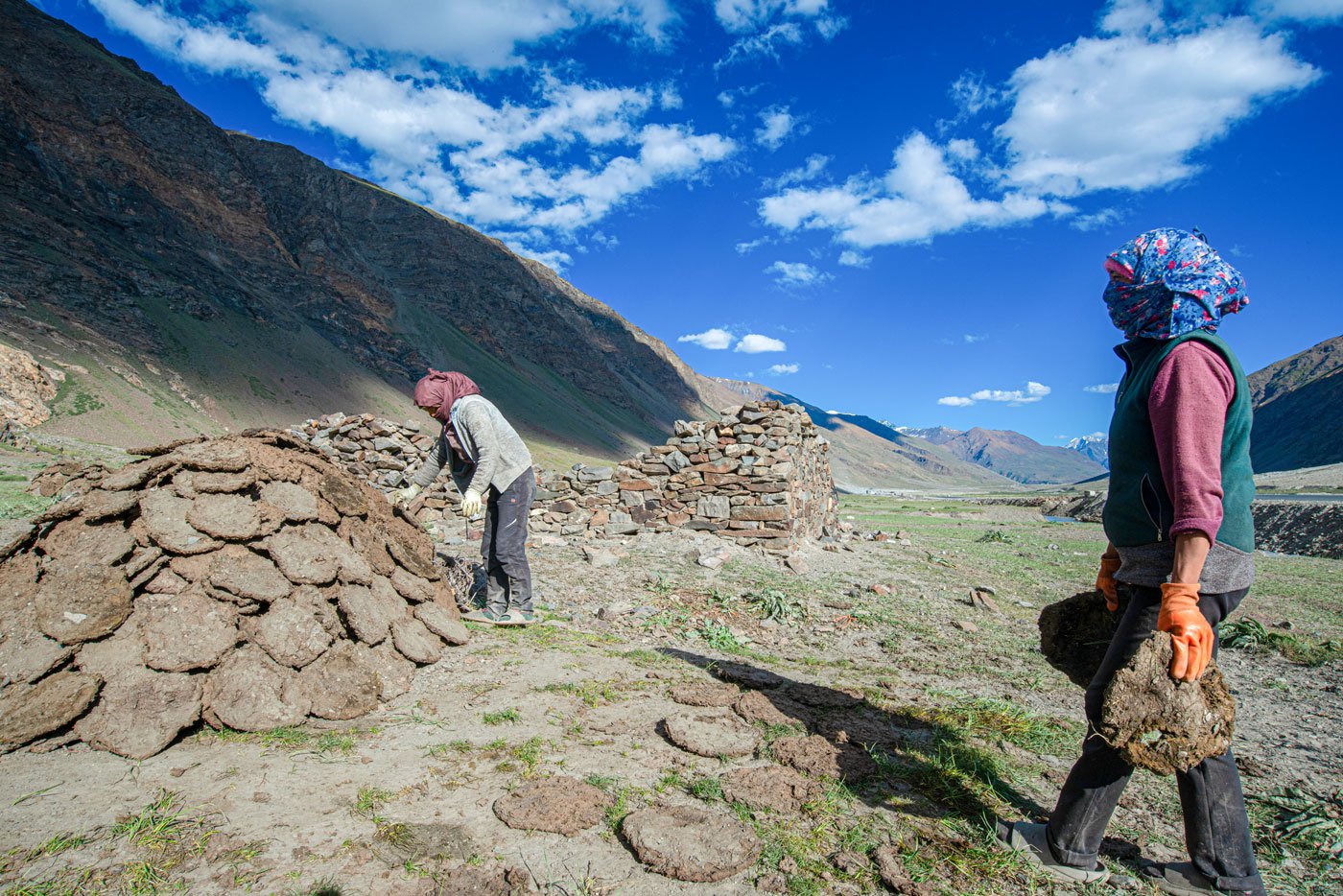
Yak dung is a significant source of fuel for people in Zanskar. It is used as cooking fuel during the winter months
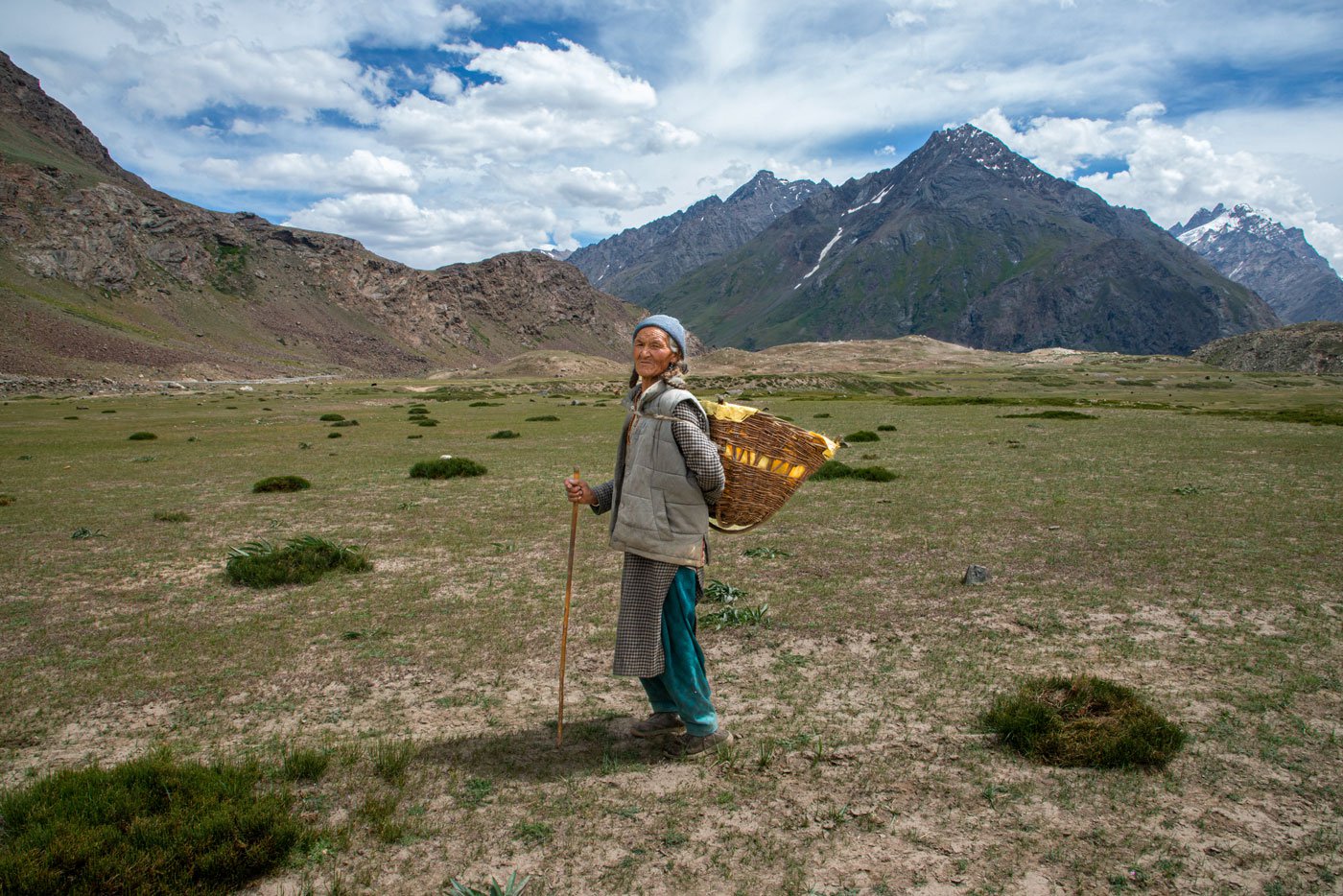
Tsering Angmo returning from collecting yak dung
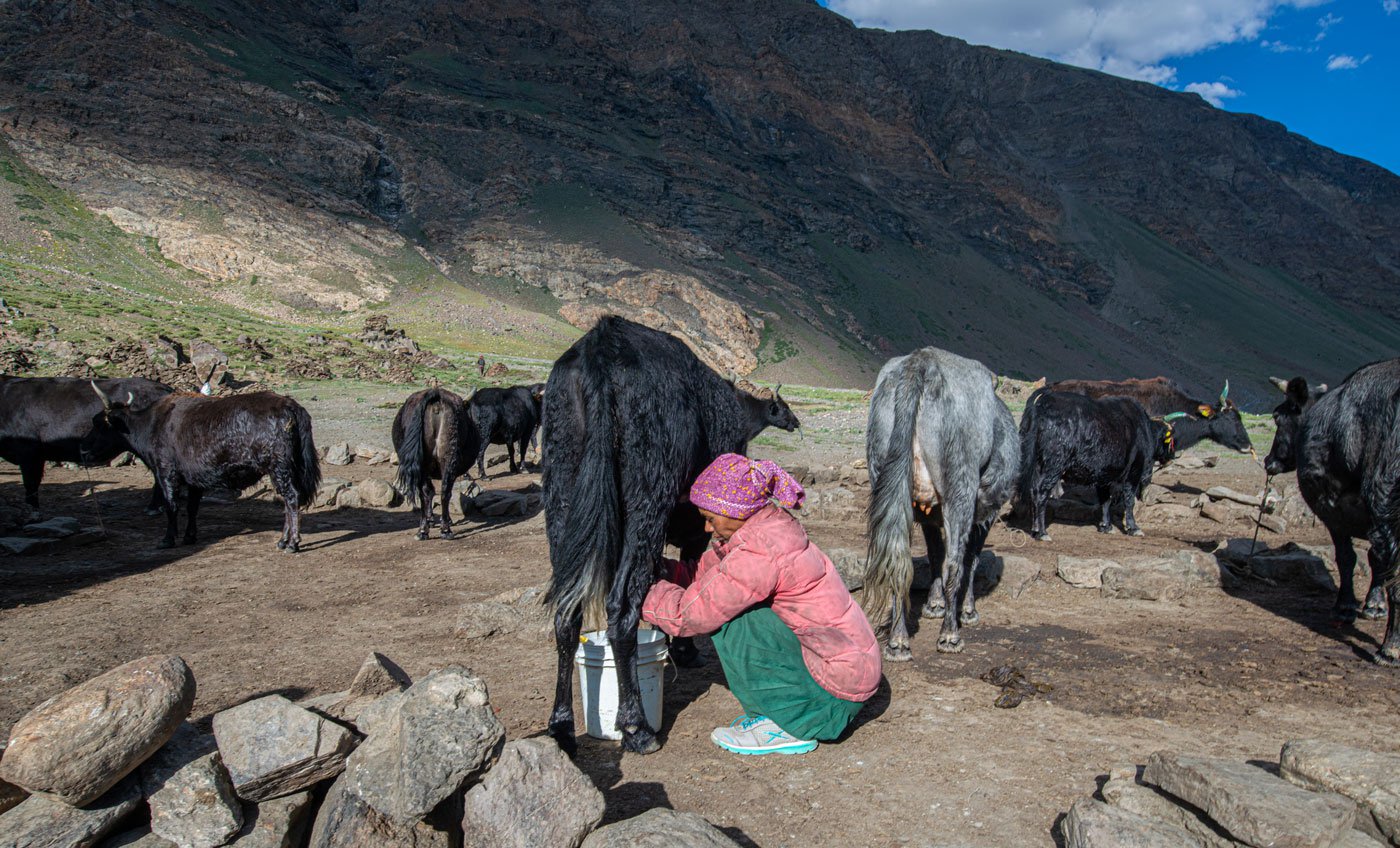
Pastoralists here are mostly dependent on dzomos, a female cross between yak and kots. A dzomo gets milked twice a day- morning and evening. The milk is used to make ghee and churpi (a local cheese)
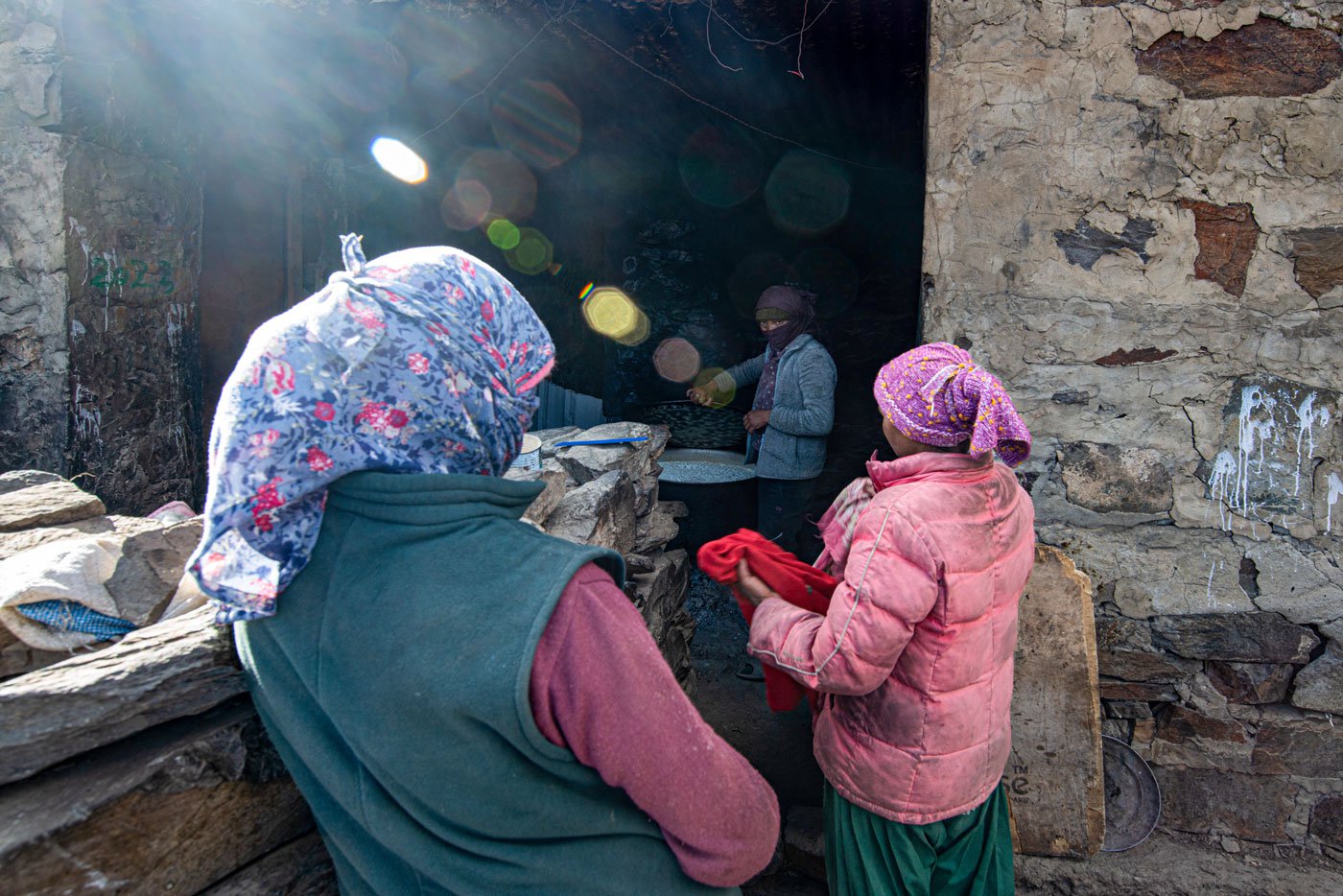
Pastoralists take a short break in the afternoon before they go to milk the yaks and dzomos
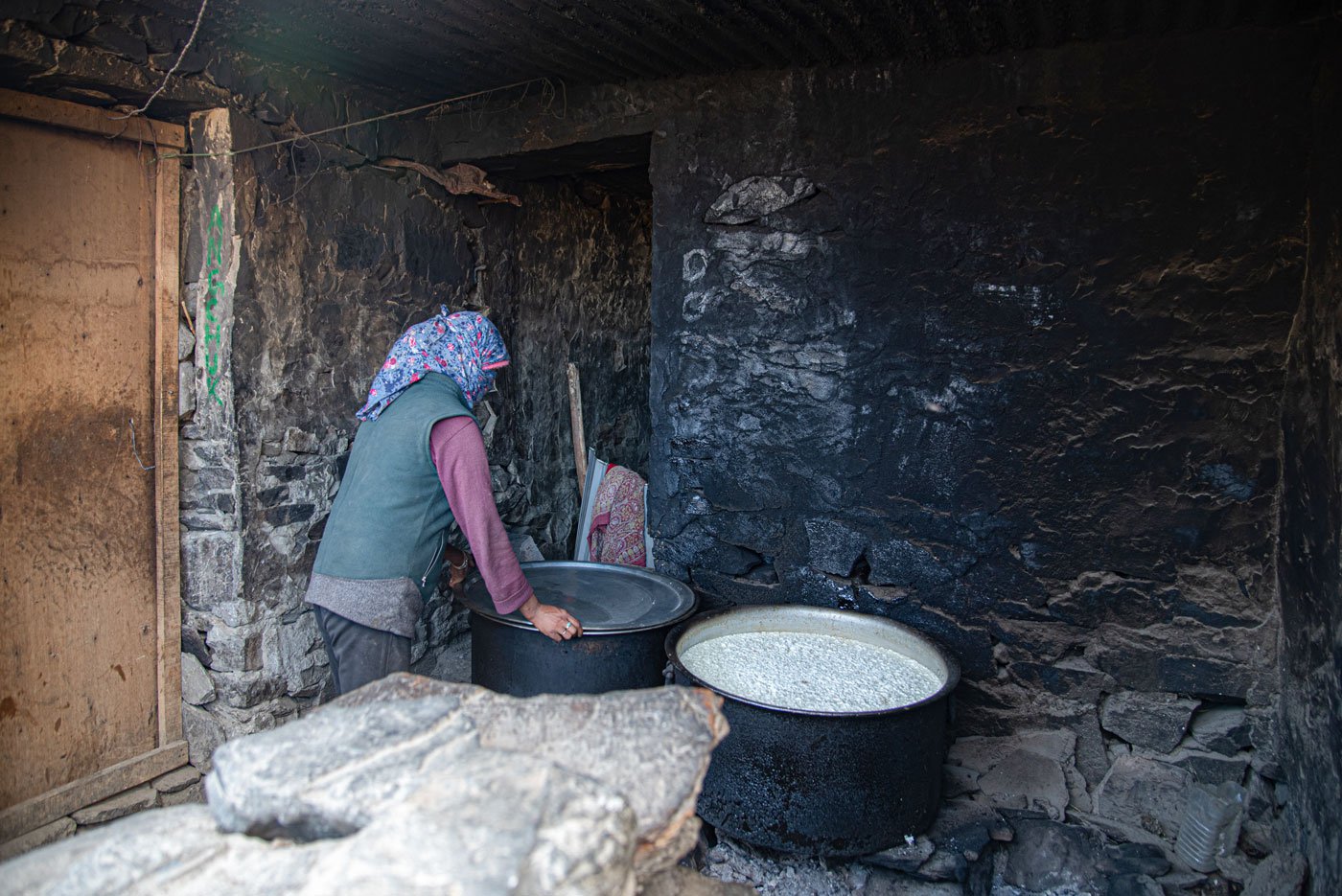
Fresh milk being boiled to make churpi , a local cheese made out of fermented yak milk
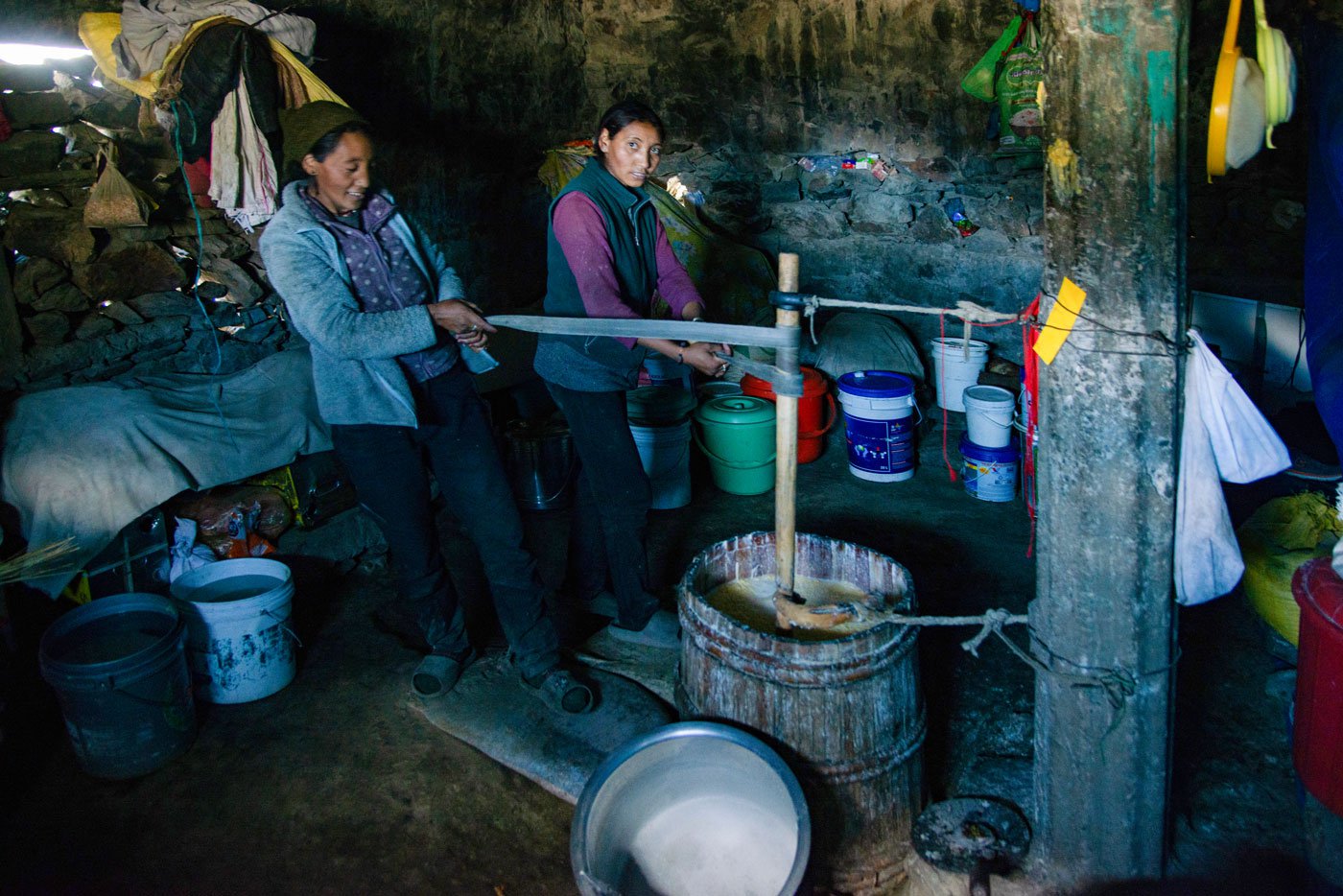
Women churn the milk to make ghee and churpi , which they then sell
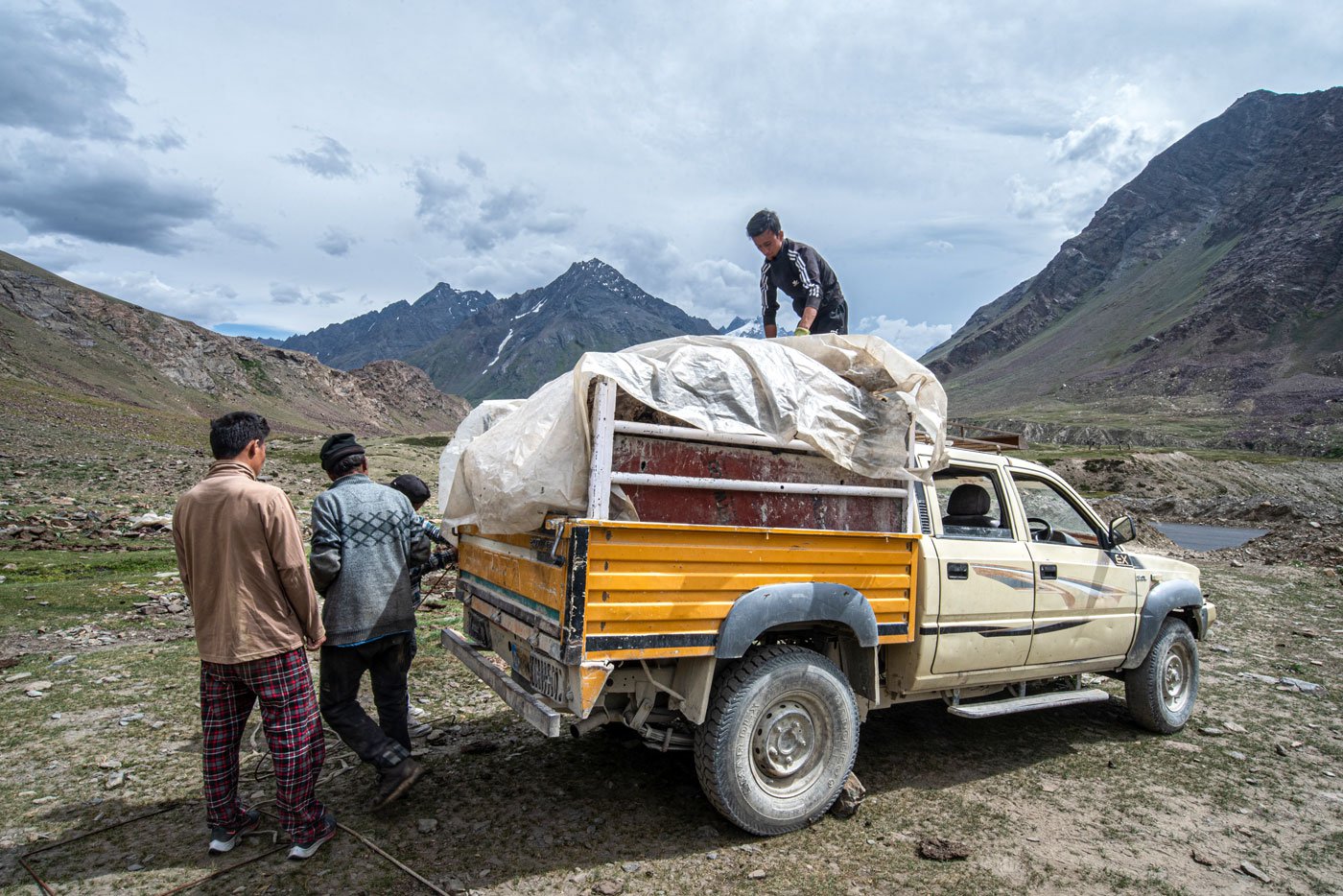
The pastoralists migrate back to their villages with their animals during winters. The family load the mini truck with dry yak dung to take back and use during winter
![Padma Thumo says the population of yaks in the Zanskar valley is decreasing: 'very few yaks can be seen in the lower plateau [around 3,000 metres] nowadays'](/media/images/20-DSC_7814-RM-Zanskars_yak_herders_are_fe.max-1400x1120.jpg)
Padma Thumo says the population of yaks in the Zanskar valley is decreasing: 'very few yaks can be seen in the lower plateau [around 3,000 metres] nowadays'
